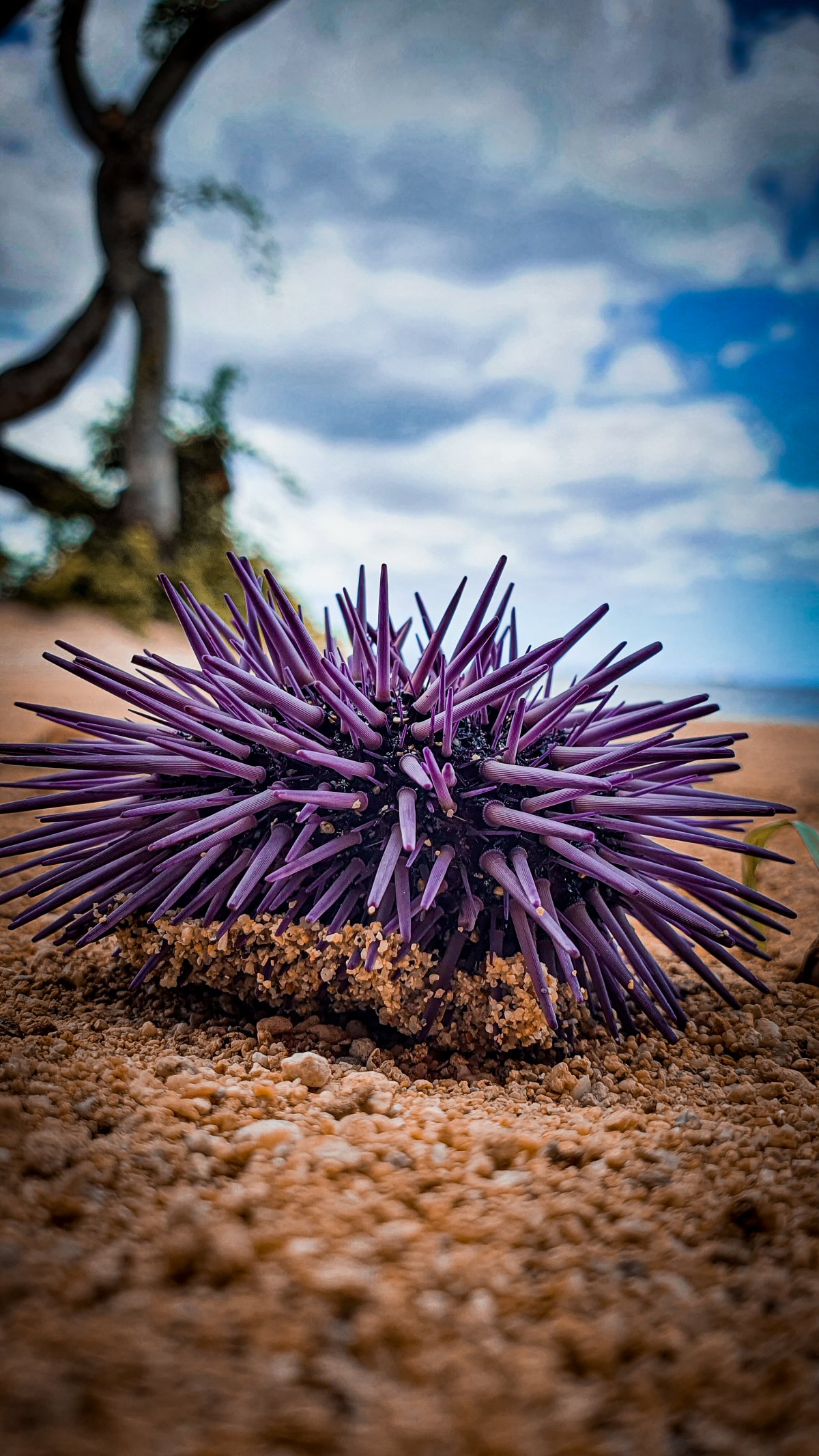
Close photography of sea urchin on the beach

Photography of purple Sea urchin on the beach of Balaclava. Echinoderms that are pentamerous, globular, or discoid that live in all seas are known as sea urchins (sea chestnuts). Their sizes range from 10 mm to 30 cm, with 10 to 15 cm being the most prevalent. Sea urchins are divided into two groups based on their morphology: regular and irregular. The most primitive sea urchin has the appearance of a ball bristling with spines; it sits on the oral (or ventral) face, which is somewhat flattened and has a mouth covered by a membrane, the peristome, in the center; five teeth are visible.
The periproct, which surrounds the anus and is surrounded by a series of plates that make up the calyx, is likewise positioned in the aboral area, or apex, opposite the mouth. The anus and mouth are located at the end of the vertical axis, a symmetry axis around which the organs are grouped in a pentameric pattern.
We have 103 guests and no members online